How Much Does Facebook Advertising Cost?
- Sep-06-2019
- Bilal Uddin
- 0 comments
What should be the cost of a Facebook advertisement?
I have been pondering on this question since I saw one query in our community.

To know the answer, I went to our Facebook marketing expert. Well, he said that there is no precise answer of how much does Facebook advertising cost; it depends on several factors such as
- Campaign Objective
- Ad placement
- Bid/Auction
- Niche Competition
- Budget & Schedule
After understanding these factors, you can calculate the cost of Facebook advertisement.
Well, I will discuss these points in the latter part of this post.
First, to cure my curiosity I dive into some research and to understand Facebook advertising cost and here are some facts that I found,
The Average Facebook Advertising Cost
The average cost of Facebook CPC (cost-per-click) advertisement is $1.72 and $11.20 on CPM (cost-per-mille) advertisement. Whereas, most industries spend around $0.5 – $2 per click on Facebook ads.
Facebook Average CPC Advertisement Cost (Industry Based)
Here is the breakdown of different niches/industries spending on Facebook CPC advertisement. I have categorize the spending into high, medium and low.
High ($2.5 and above)
Finance & Insurance —————– $3.77
Customer Service ——————- $3.08
Home Improvement —————– $2.93
Employment & Job Training ——– $2.72
B2B ————————————- $2.52
Medium ($1.5 – $2.49)
Auto ——————————— $2.24
Industrial Services —————- $2.14
Fitness —————————- $1.9
Beauty |Real Estate ————— $1.81
Low (Below $1.5)
Healthcare|Legal—————— $1.32
Technology ———————— $1.27
Education ————————- $1.06
Retail ——————————- $0.7
Travel ——————————$0.63
Apparel —————————-$0.45
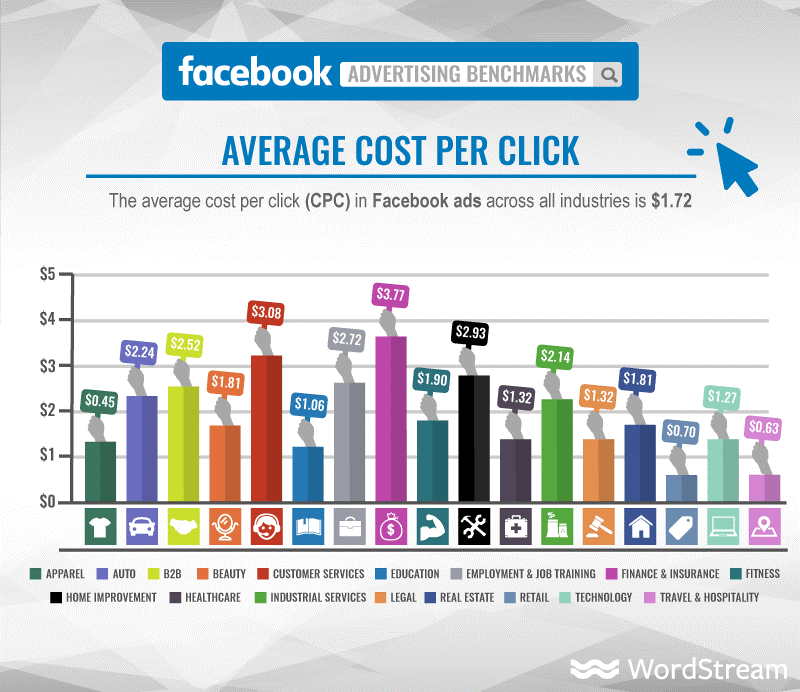
Source: WordStream
Fortunately, retail and apparel that both falls under ecommerce niche are amongst the low ad spending.
Another research of Statista shows the average spending on Facebook ads by country on CPM (cost-per-mille).
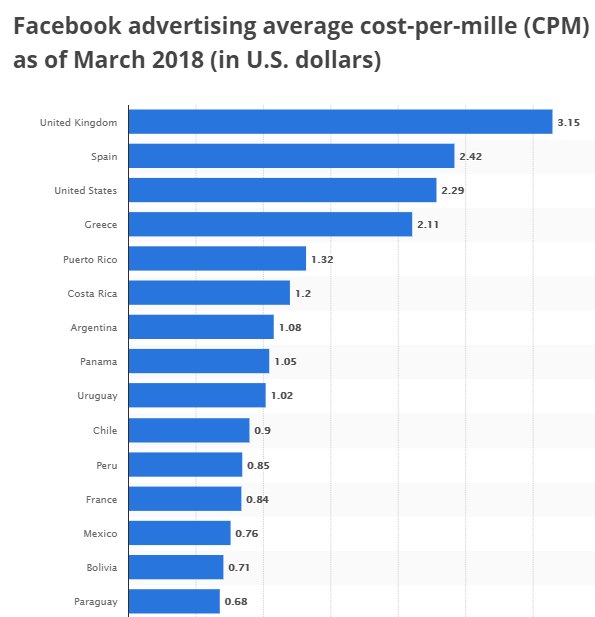
Now, coming back to my first concern where I said that there is no specific answer to Facebook Advertising cost.
First, let’s understand the different Facebook Advertising Cost Type.
Facebook Advertisement Cost Type
CPC – Cost Per Click
Facebook charges when the user clicks on the advertisement. This format of the ad should be adopted when the goal is to drive the user on your website.
The goal of these usually calls to action (CTA) that means the ad should have buttons such as Sign-Up, Shop Now, etc.
CPM – Cost per mille/1,000 impressions
Facebook charges when the ad is viewed 1000 times. This type of cost is best used for generating brand awareness.

CPA – Cost Per Action
You need to install Facebook Pixel to your website to enable this option. Facebook charges when a user goes to your website after clicking your ad and performed the objective that you have set such as sign-up newsletter, add to cart, purchase or install an app.
CPV – Cost Per View
This cost is charged on Facebook Video Ads.
Facebook charges when a user views your video ad. Video watched more than 3 seconds is counted as a single view.
CPL – Cost Per Like
Facebook charges when the user likes your business page after viewing your ad. This is good for new businesses who are aiming to gain brand awareness.
After understanding the cost types, it is time to know the matrices Facebook advertising cost depends.
Campaign Objective
The primary influence of Facebook advertising cost is what you want to achieve from your Facebook ad – Objective.
Facebook offers three objectives
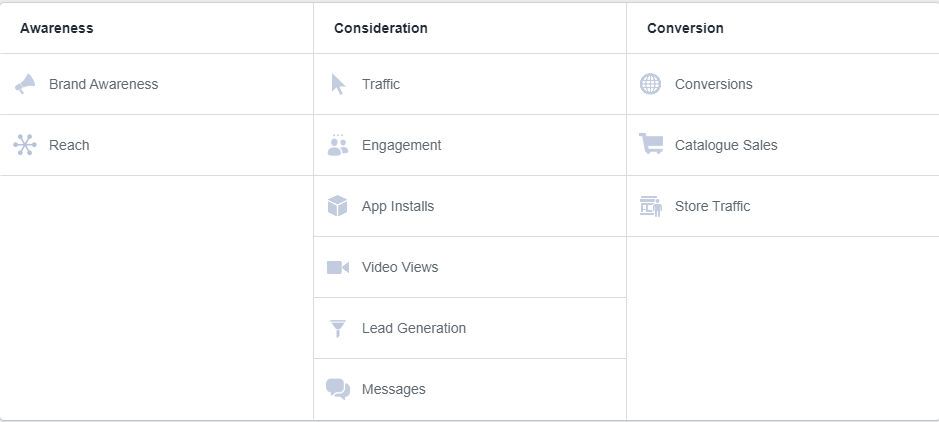
1. Awareness
Brand Awareness – Increase awareness of your brand by reaching people who are more likely to be interested in it.
Reach – Show your ad to the maximum number of people
2. Consideration
Traffic – Send more people to a destination on or off Facebook, such as a website, app, or Messenger conversation.
Engagement – Get more post engagements, Page likes, event responses, or offer claims.
App Install – Get more people to install your app.
Video Views – Get more people to view your video content.
Lead Generation – Drive more sales leads, such as email addresses, from people interested in your business.
Messages – Get more people to send messages to your business in Messenger or WhatsApp.
3. Conversion
Conversions – Drive valuable actions on your website, in your app or Messenger.
Catalog Sales – Create ads that automatically show items from your catalog based on your target audience.
Drive visits to your physical stores by showing ads to people who are nearby.
Now you need to understand something here. The more precise audience you want, the more advertising costs you will have to pay for a lesser audience.
For example:
You start a business and want to reach as much audience as you want within your niche. So, you would set the objective brand awareness; then, Facebook reaches a large audience who falls under your niche.

If you want to get traffic on your website, so you need to set the objective ‘traffic’ under consideration.

The budget is the same, but the audience is lesser.
Moreover, if you want the user to perform some action on your website, then you need to set your objective ‘conversions.’

However, it does not mean you are paying more for a lesser audience; it is more about relevancy. To make your laser targeting on fleek you can Facebook Audience Insights to get the perfect target audience.
When you set your objective as ‘conversions,’ then Facebook will show your ad to the viewer who is more likely to perform some action to your website. Compare to ‘brand awareness,’ your ad will be shown to a more broad audience to increase reach.
Competition of Niche
There is a higher chance that your competitors are aiming for a similar targeting audience unless you have some particular niche.
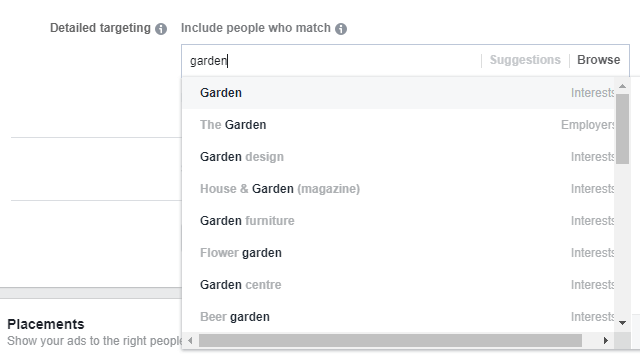
You may get surprised by knowing how many competitors are aiming for a similar advertising place as you are. In this scenario, ad cost is set by auction that is likely to affect the price of your campaign.
Ad Placement
The place you want to show the ad on Facebook and Instagram also affect the cost of the advertisement. Every placement has a different price.
Facebook offers six different ad placement options,
Feed – Show ads on audience feeds
Stories – Show ads within stories
Messages – Show ads in Messenger
In-stream – Shows ads between videos
In article – Show ads in between the content from publishers
Apps & Sites – Show ads in external apps and websites
Each placement has different rates that is based on competition, ad quality and auction. The cost of similar audience in the ‘feed’ placement might be different in ‘stories’ placement.
Ad Auction/Bid
The bid another crucial factor that decides the cost of the advertisement, but the higher bid does not give you the desired placement. It depends on two things
- The bid– The amount of your bid.
- Ad quality/ Relevancy Score – This is based on ad relevancy to your target audience. Facebook rated your ad on the scale of 1-10.
According to Facebook,
Relevance score is calculated based on the positive and negative feedback we expect an ad to receive from its target audience. The more positive interactions we expect an ad to receive, the higher the ad’s relevance score will be. (Positive indicators vary depending on the ad’s objective, but may include video views, conversions, etc.) The more times we expect people to hide or report an ad, the lower its score will be.
Ads receive a relevance score between 1 and 10, with 10 being the highest. The score is updated as people interact and provide feedback on the ad.
If you bid high, but your ad quality is poor, you are likely to lose the place to the advertiser who bids less but have higher ad quality.
Facebook allows two bidding option.
Automatic – In this Facebook set the bid automatically to get the possible engagements
Manual – In this, you set the based by manually analyzing how much ad is worth.
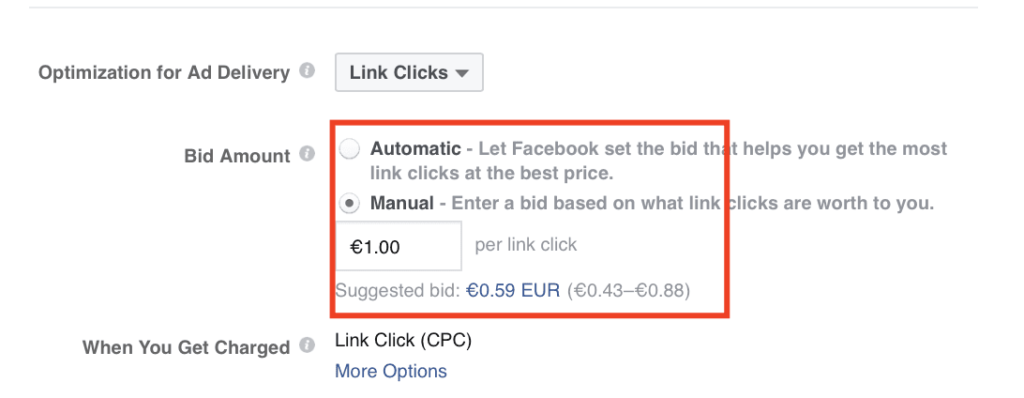
Isn’t it tough to calculate the advertising cost?
To Learn Facebook Ad Bidding Strategy, Click Here!
Budget & Schedule
Lastly, how much you are willing to spend on your Facebook ad.
Facebook offers two types of budget.
Daily Budget: Daily average of the money you are willing to spend on your campaign.
Lifetime Budget: The money you are willing to spend on your campaign.
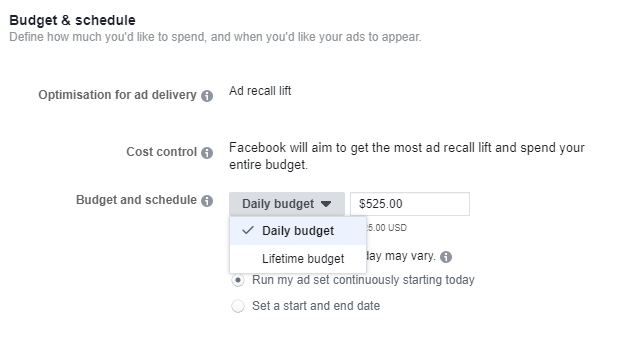
The schedule is the date you set on how long you want your ad to run. If you choose automatic bidding, Facebook will use the budget accordingly within the duration you have set.
Conclusion
I know that you came here to get the exact and precise answer to know how much Facebook advertisement cost. And, as I have mentioned earlier that it is not fixed, it depends on multiple factors.
Now, I hope you understand my point. However, I have mentioned the average Facebook advertising cost based on the industry earlier in this post.
Spending money on Facebook ads is not an easy job. So I would recommend consulting some social media marketing expert to do it for you, or you’d better learn first. To learn more about ecommerce and social media marketing, check out our free guides.
